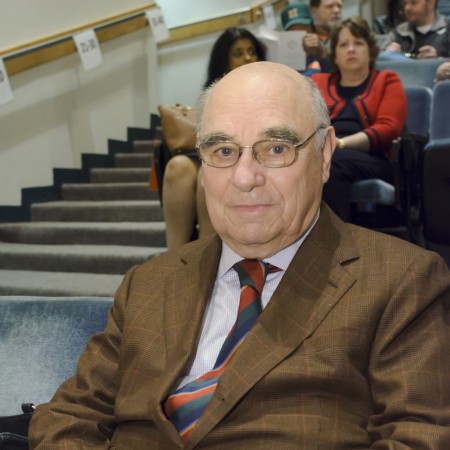Ph.D.
University of the Witwatersrand - 1968
Professional Preparation
M.Sc.
University of the Witwatersrand - 1963
University of the Witwatersrand - 1963
B.Sc.
(Hons.) University of the Witwatersrand - 1960
(Hons.) University of the Witwatersrand - 1960
Research Areas
Research Interests
Tracing lead pollution in the environment by means of isotope ratios. Mobilization of lead from the skeleton during pregnancy, lactation, and across the menopause. Lead poisoning from gunshot wounds. Relationship between the concentration of lead in blood plasma and erythrocytes.
Bioavailability of lead in soil.
Geological, and especially geochronological, studies in Central America.Publications
Hargrove III, U.S., Stern, R.J., Kimura, J .-I., Manton, W.I., and Johnson, P.R.. How juvenile is the Arabian-Nubian Shield? Evidence from Nd isotopes and pre-Neoproterozoic inherited zircon. Earth and Planetary Science Letters, 252, 308-326, 2006 2006 - Publication
Manton, W.I., C.R. Angle, K.L. Stanek Krogsrand. Origin of lead in the United States diet. Environmental Science & Technology, 39, 8995-9000, 2005 2005 - Publication
Manton, W.I., C.R. Angle, K.L. Stanek, D. Kuntzelman, Y.R. Reese and T.J Kuehnemann. Release of lead from bone in pregnancy and lactation. Environmental Research 92, 139-151, 2003. 2003 - Publication
Kimura, J-I., W.I. Manton, C-H. Sun, S. Iizumi, T. Yoshida, and R.J. Stern. Chemical diversity of the Ueno basalts, Central Japan: Identification of mantle and crustal contributions to arc basalts. J. Petrol., 43, 1923-1946, 2002. 2001 - Publication
Manton W.I., S.J. Rothenberg, and M. Manalo. The lead content of blood serum. Environmental Research 86, 263-273, 2001. 2001 - Publication
Rothenberg, S.J., V. Kondrashov, M. Manalo, W.I. Manton, F. Khan, A.C. Todd and C. Johnson. Seasonal variation in bone lead contribution to blood lead during pregnancy. Environmental Research 86,191-194, 2001. 2001 - Publication
Manton, W.I., C.R. Angle, K.L Stanek, Y.R. Reese and T.J Kuehnemann. Acquisition and retention of lead by young children. Environmental Research 82, 60-80, 2000. 2000 - Publication
Barats, M.S., H.C. Gonick, S.J. Rothenberg, M. Balabanian and W.1. Manton. Severe lead-induced neuropathy in a dialysis patient. American Journal of Kidney Diseases, 35, 963-968, 2000. 2000 - Publication
Awards
50 Years of Service Award - [2015]
Appointments
Professor
University of Texas at Dallas [1989–Present]
University of Texas at Dallas [1989–Present]
Associate Professor
University of Texas at Dallas [1973–1989]
University of Texas at Dallas [1973–1989]
Assistant Professor
University of Texas at Dallas [1967–1973]
University of Texas at Dallas [1967–1973]
Research Scientist
The Southwest Center for Advanced Studies [1965–1967]
The Southwest Center for Advanced Studies [1965–1967]
Research student
Bemard Price Institute of Geophysical Research [1962–1964]
Bemard Price Institute of Geophysical Research [1962–1964]
Graduate Student
Vredefort Ring, South Africa [1961–1962]
Vredefort Ring, South Africa [1961–1962]
Junior Geologist
Namwala Concession Ltd., Livingstone, N. Rhodesia (Zambia) [1958–1961]
Namwala Concession Ltd., Livingstone, N. Rhodesia (Zambia) [1958–1961]
Research Associate
The Southwest Center for Advanced Studies (now The University of Texas at Dallas) [8–1965]
The Southwest Center for Advanced Studies (now The University of Texas at Dallas) [8–1965]
Additional Information
Honors and Awards
- 1987. Senior Research Fellow, Council for Scientific and Industrial Research, Republic of South Africa.
- 1999. Shared Best Paper Award for the best paper in Fundamental and Applied Toxicology 1997.
